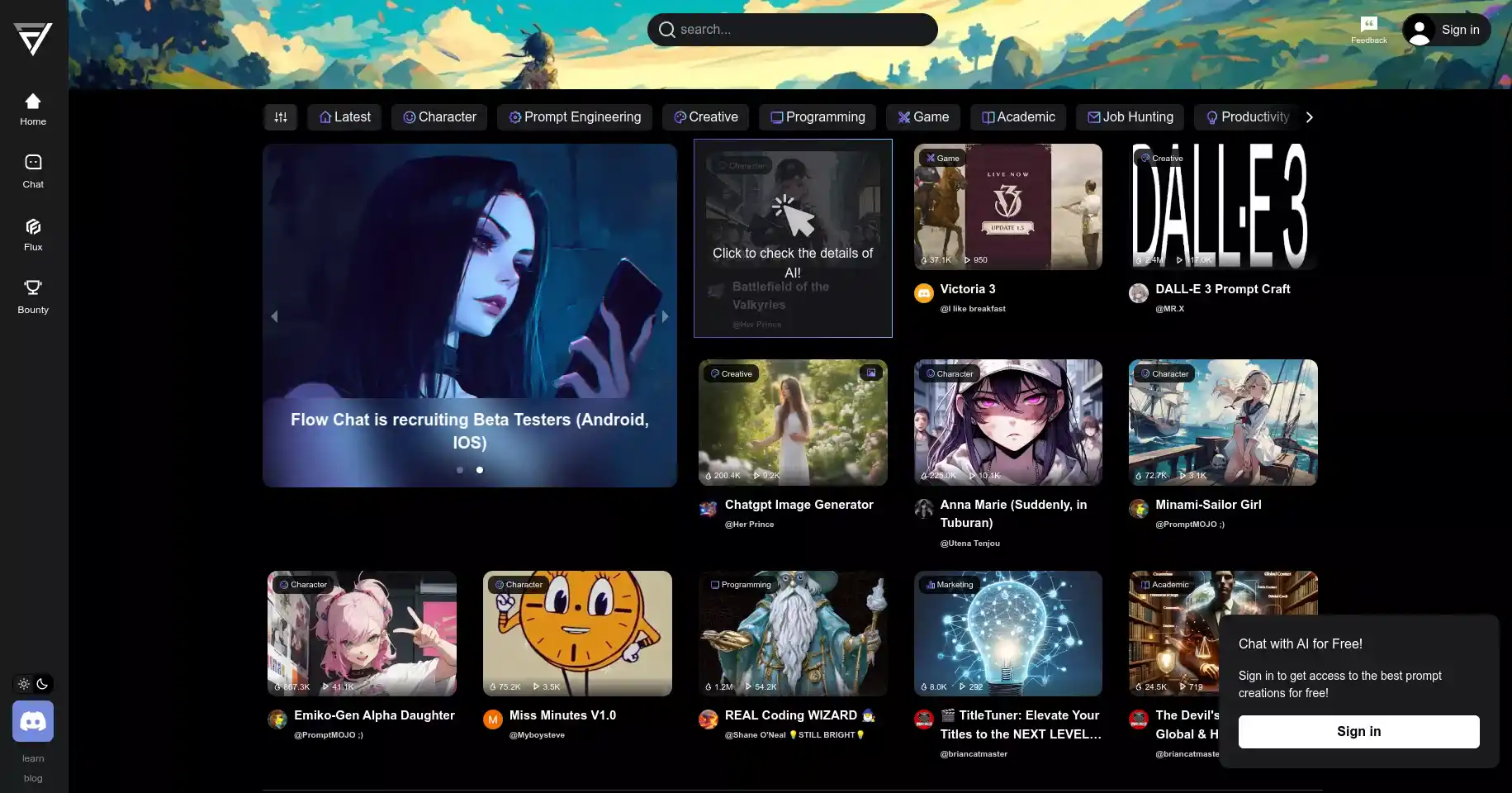Table of Contents
Generative AI models are capable of producing original and creative content, such as text, images, audio, and video, based on user input. These models have many potential applications in various domains, such as entertainment, education, business, and art.
However, accessing and using these models can be challenging for many users, especially those who are not familiar with coding or artificial intelligence. Moreover, most of the existing platforms that offer generative AI models are limited to a specific source or provider, such as OpenAI, Google, or Meta.
This is where FlowGPT comes in. FlowGPT is a new platform that aims to democratize the creation and consumption of generative AI applications. It allows users to build their applications using any generative AI model they want, and share them with the public. Users can also browse and use applications created by other users, and give feedback or tips to the creators.

What makes FlowGPT different from other platforms?
FlowGPT is not just a marketplace for generative AI applications, but an ecosystem that connects creators, users, and models. According to its co-founder, Jay Dang, it provides a collection of infrastructure and creation tools that enable users to easily design and deploy their applications, as well as a community of GenAI enthusiasts who can discover and enjoy the applications.
Unlike other platforms that restrict users to a single source of generative AI models, such as OpenAI’s GPT Store, it supports multiple sources and providers, such as Google’s Gemini, Anthropic’s Claude, Meta’s Llama 2, and OpenAI’s DALL-E 3. Users can choose the model that best suits their application’s purpose and style, and switch between models as they wish.
How does FlowGPT work?
FlowGPT has a simple and intuitive interface that resembles a chat window. Users can interact with GenAI applications by typing messages and receiving responses from the models. Users can also rate the applications, share their conversations, or tip the creators.
Each application has a description that explains its functionality and the model that it uses. Users can also see the date of creation, the number of uses, and the popularity of the application.
FlowGPT applications are essentially tools that guide the models to generate certain types of content. For example, the “Scared Girl in the Horror Movie” application prompts ChatGPT to tell a horror story with a scared girl as the protagonist. The “TitleTuner” application asks ChatGPT to improve the headlines of articles for SEO purposes. The “SchoolGPT” application uses ChatGPT to solve math, physics, and chemistry problems with detailed explanations.
What are the benefits of FlowGPT?
FlowGPT has several benefits for both creators and users of generative AI applications. For creators, it offers:
- A platform to showcase their creativity and skills, and earn tips from users.
- A way to leverage the power and diversity of different generative AI models, without having to code or train them.
- A feedback mechanism to improve their applications and learn from user preferences.
For users, it offers:
- A variety of applications to choose from, covering different categories and domains, such as creative, programming, games, and academic.
- A chance to experience the capabilities and limitations of different generative AI models, and compare their performance and quality.
- A fun and engaging way to interact with generative AI models, and learn new things from them.
What are the challenges and limitations of FlowGPT?
FlowGPT is not without its challenges and limitations. One of the main challenges is to ensure the quality and reliability of the applications and the models. Since it is an open platform, anyone can create and list their applications, which may not always meet the expectations or needs of the users. Moreover, generative AI models are not perfect and may produce inaccurate, inappropriate, or nonsensical content, depending on the input and the context.
Another challenge is to maintain the security and privacy of the users and the creators. FlowGPT does not store or share any personal information of the users or the creators, but it does allow users to share their conversations with others, which may contain sensitive or confidential data. Users and creators should be careful about what they disclose or reveal in their interactions with the models and the applications.
FlowGPT is an innovative platform that provides a unique approach to developing and utilizing generative AI applications. It has the potential to broaden the influence and effectiveness of generative AI models, while also cultivating a community of GenAI supporters. Despite encountering obstacles and constraints, FlowGPT is in its initial phase and is expected to progress and enhance with the increasing number of users and contributors on the platform.